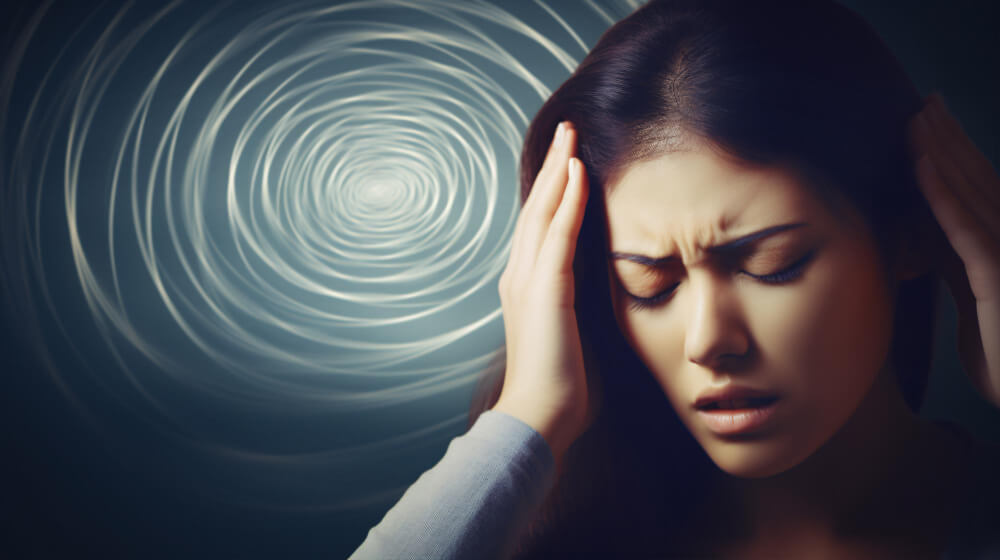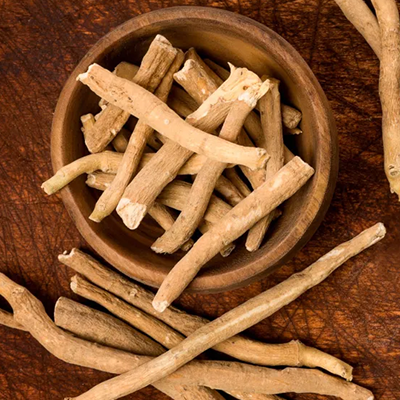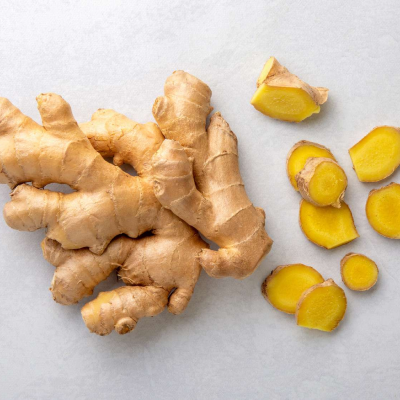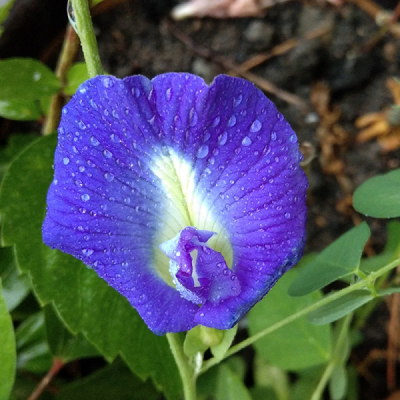Vertigo is a sensation of spinning or dizziness, where a person feels as though they or their surroundings are moving when there is no actual movement. It is a symptom rather than a disease and is often associated with problems in the inner ear, brain, or sensory pathways.
Causes of Vertigo
Inner Ear Disorders
- Benign Paroxysmal Positional Vertigo (BPPV): Caused by displaced calcium crystals in the inner ear.
- Meniere’s disease: A condition involving fluid build-up in the inner ear, causing vertigo, hearing loss, and tinnitus.
- Labyrinthitis or Vestibular Neuritis: Infections or inflammation of the inner ear or vestibular nerve.
Neurological Disorders
- Migraine-associated vertigo.
- Stroke or transient ischemic attack (TIA).
- Multiple sclerosis.
Head or Neck Injuries
- Trauma affecting the inner ear or sensory nerves.
Medications
- Certain antibiotics, diuretics, or anti-seizure drugs that are ototoxic.
Other Causes
- Low blood pressure.
- Dehydration or anaemia.
- Anxiety or panic attacks.
Types of Vertigo
Peripheral Vertigo
- Originates from issues in the inner ear or vestibular nerve.
- Common causes: BPPV, Meniere’s disease, and vestibular neuritis.
Central Vertigo
- Caused by problems in the brain, especially in the cerebellum or brainstem.
- Common causes: Stroke, multiple sclerosis, or brain tumours.
Signs and Symptoms
Primary Symptoms
A sensation of spinning, tilting, or swaying.
Feeling unbalanced or pulled in one direction.
Associated Symptoms
- Nausea and vomiting.
- Sweating
- Abnormal eye movements (nystagmus)
- Hearing loss or ringing in the ears (in Meniere’s disease).
- Headache or neck pain.
Triggers
- Sudden head movements.
- Change in body position, such as getting out of bed.
Diagnostic methods
Medical History and Physical Exam
- Questions about dizziness, triggers, and associated symptoms.
Tests
- Dix-Hallpike Maneuver: To diagnose BPPV.
- Head Impulse Test: Checks vestibular function.
- Electronystagmography (ENG): Measures involuntary eye movements.
- MRI or CT scan: To detect central causes like stroke or tumours.
- Hearing Tests: For associated conditions like Meniere’s disease.
Ayurvedic Perspective on Vertigo
In Ayurveda, vertigo can be correlated with "Bhrama" or "Vataja Nanatmaja Vyadhi", which is mainly caused by an imbalance of Vata Dosha. When Vata becomes aggravated, it disrupts the functioning of the sensory organs and leads to a spinning or disoriented sensation.
Ayurvedic Management of Vertigo
Dietary Guidelines
- Eat warm, light, and easily digestible food.
- Include ghee, cooked vegetables, whole grains, and nuts to nourish Vata.
- Avoid cold, raw, and processed foods.
Lifestyle Changes
- Avoid sudden movements or stress.
- Practice regular sleep patterns and avoid sleep deprivation.
Panchakarma Therapies
Abhyanga (Oil Massage):
- Full body massage with medicated oils like Mahanarayana Taila to pacify Vata.
Shirodhara:
- Continuous pouring of medicated oil on the forehead to calm the nervous system.
Nasya (Nasal Therapy):
- Administering medicated oils like Anu Taila into the nostrils to strengthen sensory organs.
Vasti (Medicated Enema):
- Cleanses toxins and balances Vata.
Herbal Remedies
Ashwagandha (Withania somnifera)
- Strengthens the nervous system and reduces stress.
- Dosage: 1 tsp powder with warm milk at bedtime.
Brahmi (Bacopa monnieri)
- Improves brain function and calms the mind.
- Dosage: 250–500 mg capsule daily.
Ginger (Zingiber officinale)
- Effective in reducing nausea and dizziness.
- Taken as tea or fresh juice with honey.
Shankhpushpi (Convolvulus pluricaulis)
- Balances Vata and improves mental clarity.
- Used as syrup or decoction.
Ayurvedic Formulations
- Brahmi Ghrita: Enhances memory and calms the mind.
- Dashmoolarishta: Reduces dizziness and inflammation.
- Ashwagandharishta: Strengthens the nervous system and balances Vata.
- Sarivadyasava: Detoxifies the body and improves blood flow.
Yoga and Pranayama
Asanas
- Tadasana (Mountain Pose): Improves balance.
- Vrikshasana (Tree Pose): Strengthens the nervous system.
- Shavasana (Corpse Pose): Relaxes the body and mind.
Pranayama
- Anulom Vilom (Alternate Nostril Breathing): Balances Vata.
- Bhramari (Bee Breathing): Calms the mind.
Ayurvedic treatment for vertigo focuses on balancing Vata Dosha, enhancing digestion to prevent toxin accumulation, and nourishing the nervous system. A combination of herbal remedies, Panchakarma therapies, and lifestyle modifications can provide long-term relief. Always consult a qualified Ayurvedic practitioner for a personalized treatment plan.







